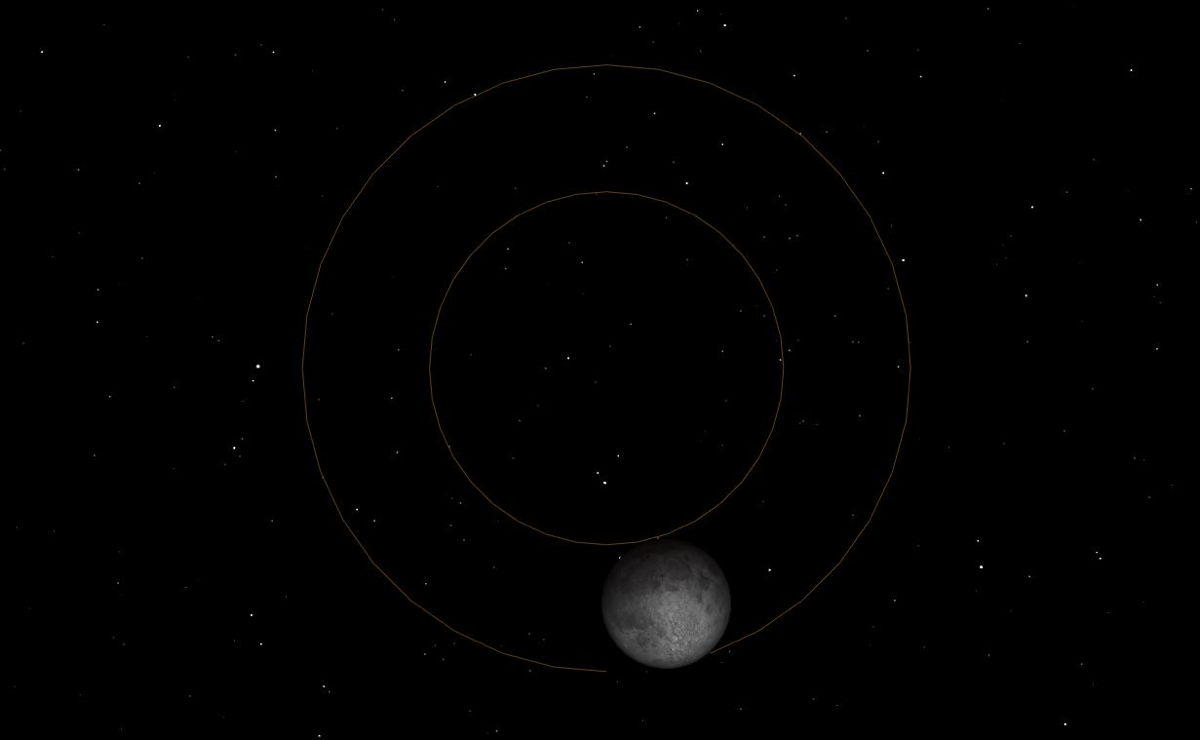Partial Lunar Eclipse Occurs Thursday: Watch It Live Online

Update: See the first photos of Thursday's partial lunar eclipse by stargazers here: Lunar Eclipse Photos: Full Moon of April 2013
The April full moon will pass through Earth's shadow in a partial lunar eclipse on Thursday (April 25). While the lunar event won't be visible for U.S. stargazers, moon fans can still catch the sight live online in two free webcasts.
The lunar eclipse on Thursday will mark the first eclipse of any kind in 2013, and by sheer cosmic coincidence it will occur during the April full moon, which is also known as the "Pink" Full Moon. It is the first, and likely the best, of three lunar eclipses occurring this year.
You can watch the partial lunar eclipse live on SPACE.com here courtesy of webcasts provided by the U.S-based Slooh Space Camera and Italy's Virtual Telescope Project. NOTE: Both events depend on good weather at the observing sites. The entire lunar eclipse will be visible to the unaided eye for observers in Eastern Europe, Africa, Central Asia and Western Australia. [How to Photograph Lunar Eclipses (Photo Guide)]
"It will be a great event!" Gianluca Masi, an astrophysicist with the Bellatrix Astronomical Observatory who runs the Virtual Telescope Project in Ceccano, Italy, told SPACE.com.
The first of the two webcasts will be provided by the Slooh Space Camera and begins at 3 p.m. EDT (1900 GMT). Slooh's broadcast team will be joined by solar scientist Lucie Green of the Mullard Space Science Laboratory in the United Kingdom, and feature views from the company's observatory on the Canary Islands, off the west coast of Africa. The webcast can also be accessed directly at the Slooh website: http://www.slooh.com
The Virtual Telescope Project webcast in Italy will begin shortly after the Slooh event at 3:30 p.m. EDT (1930 GMT). It will be carried live on SPACE.com as well, and can be accessed directly here: http://www.virtualtelescope.eu/webtv/
Breaking space news, the latest updates on rocket launches, skywatching events and more!
Lunar eclipses occur when the moon, Earth and sun align, with the moon positioned on the opposite side of the Earth from the sun.
Thursday's lunar eclipse may be the best lunar eclipse of 2013, but will not be as impressive as stunning total lunar eclipse, in which the entire moon is obscured by Earth's shadow. During total lunar eclipses, the moon can take on a blood-red hue due to light refracted by the Earth's atmosphere.
"This will not be a spectacular event, as the moon will enter only marginally the Earth’s shadow, but it will be well worth a look," Virtual Telescope officials said in a statement.
The other two lunar eclipses this year will occur on May 25 and Oct. 18. Both of those events are so-called "penumbral" lunar eclipses because the moon will only pass through the outer edge, or penumbra, of Earth's shadow.
In addition to following Thursday's lunar eclipse in online webcasts, Slooh has launched a new iPad app to make celestial events more accessible. The Slooh iPad App is available via iTunes, officials said.
"The free Slooh iPad app is a great way for individuals to experience Slooh's broadcasts and understand how the night sky works," Slooh President Patrick Paolucci said in a statement.
In addition to the lunar eclipses of 2013, there are also two solar eclipses to for stargazers to look forward to.
Next month, on May 25, the moon pass between the Earth and sun to create an annular, or "ring of fire" solar eclipse. That event will be visible from parts of Western Australia, eastern Papua New Guinea and several other island locations in the southern Pacific Ocean.
A rare hybrid solar eclipse, in which an annular eclipse transitions into a total solar eclipse depending on where a viewer is observing from, will occur on Nov. 3 and be primarily visible along a thin corridor that begins in the northern Atlantic Ocean and crosses to equatorial Africa, according to eclipse expert Fred Espenak at NASA's Goddard Space Flight Center in Greenbelt, Md.
Editor's note: If you live in the observing area of Thursday's lunar eclipse and snap an amazing picture of the moon that you'd like to share for a possible story or image gallery, send photos, comments and your name and location to managing editor Tariq Malik at spacephotos@space.com.
Email Tariq Malik at tmalik@space.com or follow him @tariqjmalik and Google+. Follow us @Spacedotcom, Facebook and Google+. Original article on SPACE.com.

Tariq is the award-winning Editor-in-Chief of Space.com and joined the team in 2001. He covers human spaceflight, as well as skywatching and entertainment. He became Space.com's Editor-in-Chief in 2019. Before joining Space.com, Tariq was a staff reporter for The Los Angeles Times covering education and city beats in La Habra, Fullerton and Huntington Beach. He's a recipient of the 2022 Harry Kolcum Award for excellence in space reporting and the 2025 Space Pioneer Award from the National Space Society. He is an Eagle Scout and Space Camp alum with journalism degrees from the USC and NYU. You can find Tariq at Space.com and as the co-host to the This Week In Space podcast on the TWiT network. To see his latest project, you can follow Tariq on Twitter @tariqjmalik.


